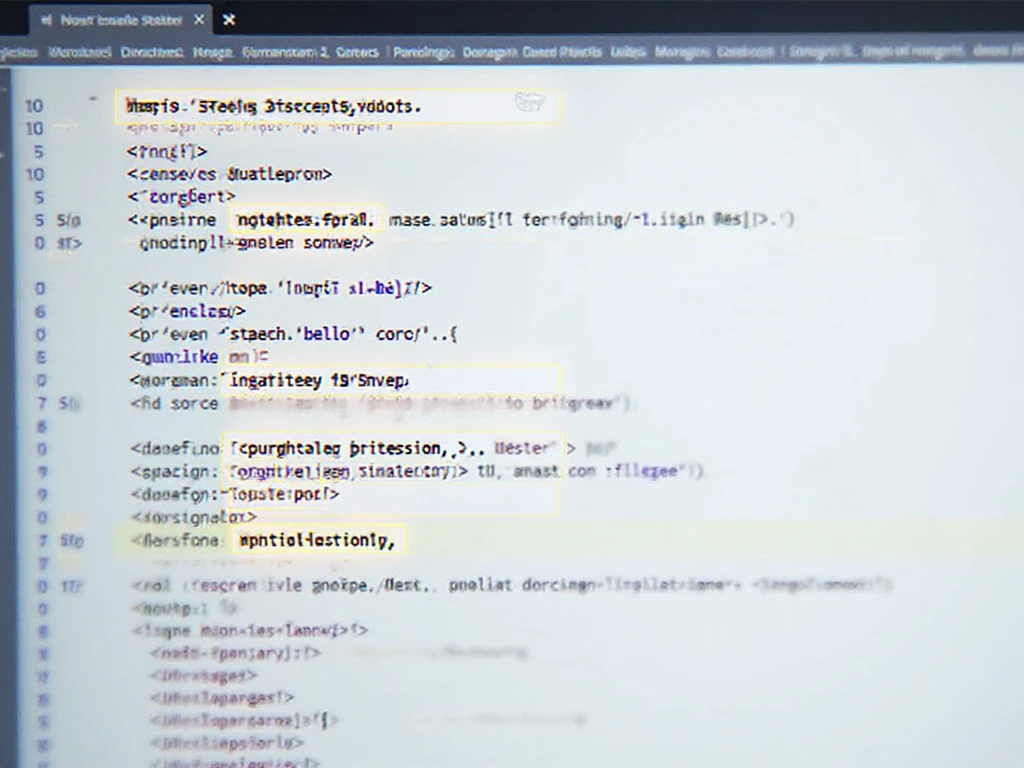You know that feeling when you’re pouring money into marketing campaigns but can’t shake the nagging suspicion you’re bleeding cash? Here’s the uncomfortable truth: most business owners have zero clue what they’re actually spending to land each new customer. This blind spot? It’s costing you more than you think.
Picture your competitor down the street. While you’re throwing darts at a marketing board, they’re calculating exactly how much each customer costs them. They’re making surgical decisions with their ad spend while you’re using a sledgehammer approach. That’s the power of mastering your cost per acquisition metrics – it’s the difference between strategic growth and expensive guesswork.
Ready to flip the script on your marketing spend? Let’s break down the nuts and bolts of how this game-changing formula actually works.
Understanding the Formula for Cost Per Acquisition and Its Core Components
Here’s something that’ll make you wince: 80% of marketing executives struggle to make data-driven decisions, despite all the information at their fingertips. Ouch, right? But this isn’t just another depressing statistic – it’s your golden opportunity.
While your competition drowns in data paralysis, you can cut through the noise by nailing the fundamentals of customer acquisition costs. Think of it as your secret weapon in an increasingly crowded marketplace.
Essential Elements of the Cost Per Acquisition Formula
Let’s get real about what goes into your acquisition costs. Sure, the basic math is simple enough – divide your total marketing spend by new customers gained. But here’s where most people mess up: they’re only counting the obvious expenses.
Your true acquisition costs include way more than just ad spend. We’re talking salaries for your marketing team, those monthly software subscriptions you forgot about, agency retainers, and even the portion of office rent allocated to your marketing department.
If you miss these hidden expenses when calculating your cost per acquisition formula, you’re essentially lying to yourself about your true customer economics. The businesses that nail this calculation don’t just count advertising dollars.
Direct vs. Indirect Acquisition Costs in Your Formula
Think of direct costs as the no-brainer expenses. Paid ads, promotional swag, sales commissions – these clearly tie to bringing in new customers. Easy enough to track.
Indirect costs? That’s where things get interesting. Your CRM subscription, analytics tools, and the portion of your marketing manager’s salary dedicated to acquisition versus retention work. These matter more than you’d expect, but they’re tricky to allocate properly.
Smart operators split these costs based on time allocation. If your team spends 70% of their effort on acquisition activities, then 70% of their salary goes into your acquisition calculation.
Time-Based Variations in Cost Per Acquisition Calculations
Your acquisition costs aren’t static – they dance around based on seasons, market conditions, and competitive pressure. Holiday retailers know this dance well. December might cost them $50 per customer, while February could drop to $25.
Here’s what separates the pros from the amateurs: they track these fluctuations weekly and monthly, not just annually. This granular approach helps you spot trends before they bite you in the wallet.
Now that you’ve got the formula basics locked down, let’s explore why industry leaders treat acquisition cost tracking like a religion.
The Critical Importance of Cost Per Acquisition for Modern Businesses
Understanding the importance of cost per acquisition isn’t just about keeping your CFO happy. It’s about staying alive in markets where one wrong move can crater your business.
Revenue Protection Through Strategic Cost Per Acquisition Monitoring
Imagine catching a money-losing campaign before it burns through your quarterly budget. That’s exactly what happens when you monitor your acquisition costs religiously. You’ll spot underperforming channels while there’s still time to pivot, rather than discovering the damage during your monthly financial review.
Here’s the kicker: customer acquisition costs naturally creep upward as markets mature and competition intensifies. Companies that stay ahead of this trend adjust their strategies proactively instead of reactively.
Competitive Advantage via Improved Acquisition Spending
Your smartest competitors are using their acquisition cost knowledge to outbid you on profitable channels. They know exactly how much they can afford to spend on high-lifetime-value customers, giving them bidding power you can’t match without similar insights.
But there’s a bonus effect here. Lower acquisition costs free up the budget for customer experience improvements. Better service drives referrals, which reduces future acquisition costs. It’s a virtuous cycle that compounds over time.
Investment Justification Using Cost Per Acquisition Metrics
Board meetings transform when you can present concrete customer costs instead of vanity metrics like impressions or clicks. “We spent $50,000 and acquired 200 customers at $250 each” hits differently than “Our campaign generated 2 million impressions.”
Investors eat this stuff up. Demonstrating control over customer acquisition expenses signals operational maturity and scalability potential – exactly what they want to see before writing bigger checks.
Getting strategic importance is just step one. Now let’s dive into the advanced calculation methods that separate the pros from the wannabes.
Advanced Methods for Calculating the Cost Per Acquisition Formula Accurately
Simple division worked fine when customers discovered your business through single touchpoints. Those days are long gone. Today’s customer journeys zigzag across multiple channels before conversion, making accurate cost calculation way more complex.
Multi-Touch Attribution Models for Complex Customer Journeys
Picture this: a prospect sees your Instagram ad, visits your website, joins your email list, ignores three follow-up emails, then converts after clicking a Google search ad. Which channel gets credit for the acquisition?
Last-click attribution dumps all the credit on Google, making your social media spend look worthless. First-click gives it all to Instagram, making your search campaigns appear inefficient. Neither tells the whole story.
Multi-touch attribution spreads credit across touchpoints more realistically. Linear models split credit equally. Time-decay models weigh recent interactions more heavily. Each approach reveals different insights about your customer journey.
Cross-Channel Cost Per Acquisition Formula Applications
The average checkout abandonment rate is 68.8%, which means tracking costs across your entire funnel becomes critical. Email marketing costs pennies per send, but social media advertising might cost dollars per click.
Some channels excel at awareness while others shine at conversion. Understanding these nuances prevents you from cutting budget from essential awareness channels just because they don’t show obvious last-click conversions.
With accurate calculations and industry context in your toolkit, you’re ready to unlock the strategic advantages that smart acquisition cost management delivers.
Strategic Benefits of Cost Per Acquisition Management
The benefits of cost per acquisition tracking extend way beyond basic expense monitoring. Forward-thinking businesses use this intelligence to make strategic decisions that compound returns over years, not quarters.
Budget Allocation Efficiency Through Acquisition Cost Analysis
Data-driven budget allocation kills the guesswork and office politics around marketing spend. Channels delivering customers cheaply get more investment. Expensive channels get scrutinized or defunded. Simple logic that most companies ignore.
Historical patterns also help predict budget needs during seasonal swings or market shifts, preventing those awkward mid-quarter budget crisis conversations.
Customer Lifetime Value Integration with Acquisition Costs
The magic happens when you connect acquisition costs to customer lifetime value. You can justify higher acquisition spend on customers who stick around longer and spend more. This unlocks premium advertising channels that scare away competitors focused solely on cheap clicks.
Customer segmentation by lifetime value refines your targeting over time, improving acquisition efficiency while competitors chase one-size-fits-all metrics.
Key Takeaways on Customer Acquisition Success
Look, mastering your cost per acquisition formula isn’t just about controlling costs – it’s about building an unfair competitive advantage. While your competitors operate on gut instinct and prayer, you’ll make surgical decisions backed by hard data.
The companies dominating their markets tomorrow are perfecting their acquisition strategies today. Don’t get left behind playing catch-up when you could be setting the pace.
Common Questions About Cost Per Acquisition
Why is it important for entrepreneurs to calculate CAC?
CAC is an important growth metric for businesses to determine customer profitability and sales efficiency. If you have a successful business model, your CAC will be sufficiently lower than LTV.
What’s the difference between cost per acquisition and customer acquisition cost?
These terms are essentially identical – both measure how much you spend to acquire each new customer through marketing and sales efforts.
How often should businesses recalculate their cost per acquisition metrics?
Most businesses benefit from monthly calculations, though high-volume companies might track weekly. Quarterly reviews help identify longer-term trends and seasonal patterns.


